Some details about service on German submarines from the point of view of its organization
It is unlikely that anyone would argue that the Kriegsmarine submarines were ineffective, especially in the initial period of the war, when the Allies did not yet have technical superiority in anti-submarine defense.
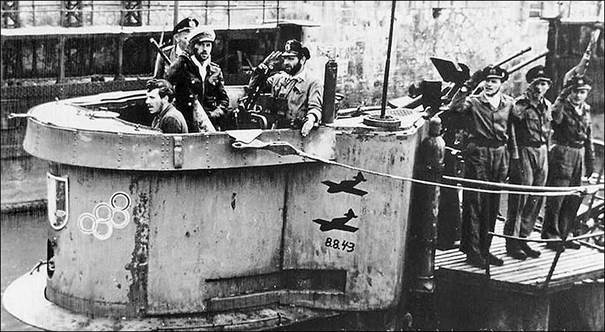
The key to this was the clarity and clarity of all the actions of the submariners on the submarine – the very same Ordnung, without whom there is nothing to do under water at all. Below are some excerpts from the German “Regulations for U-boats”, translated into English with the “Secret” stamp already removed. They are set out in 86 pages, so here is only a small part of them.
“A. Language and commands.
1. All orders and reports made during diving, ascent, purging, etc., must be repeated (rehearsed, as we say) to be absolutely sure that they are correctly understood. An execution report must follow each order.
2. When giving orders about the position of shut-off valves, only the words “open” and “close” are used. Only the words “on” and “off” should be used in feedback when reporting the position of the valve Words such as “closed, tight and open” are prohibited. When naming pipelines, stop valves, etc., it is allowed to use only the standardized nomenclature (in accordance with the album of drawings).
3. The order to flood shall be given only verbally. (The word used is not submergence, but flooding. As far as I understand, we are not talking about diving from a surface position with all these howlers and cries of “Alarm!” Namely, about a change in depth already in the underwater position, when any excessive noise is undesirable, especially since the following paragraph follows
4. When submerged, there is usually strict silence in the boat, so sounds indicating a malfunction in the compressed air system or water ingress from the outside are heard immediately. To a large extent, operations are performed through communication with the help of hand signals.
5. Permission must be requested for any activity accompanied by noise. Movement on the boat must be carried out silently upon prior request to the central post. It should be limited to what is absolutely necessary. In addition, it is necessary that the deck deck plates lie firmly and do not rattle.
C. Safety regulations
16. A boat may be submerged only if there is a commander and a mechanic on board.
19. In the harbor, all hatches must be closed during non-working hours, except for the hatch of the conning tower. The torpedo loading hatch may only be opened in the presence of an officer.
20. Before diving, the commander must be aware of the depth under the keel and other navigational issues. During peacetime exercises, the minimum water depth is 18 meters.
21. During exercises in peacetime, a submarine may not dive if it does not have on board:
(a) Half a supply of compressed air,
b) half of the oxygen supply,
(c) A working life-saving appliance for each person on board.
The next point raises some questions. Metaphrase:
22. Flood valves can only be opened at sea when the boat is ready to dive. They must not be closed while the ballast tanks concerned are completely or partially submerged.
(What kind of flood valves? It is necessary to know that the arrangement of ballast tanks on different projects may differ. Here is the most primitive scheme of operation of the scuppered system tank. Scuppers are holes in its lower part, they are not locked with anything:
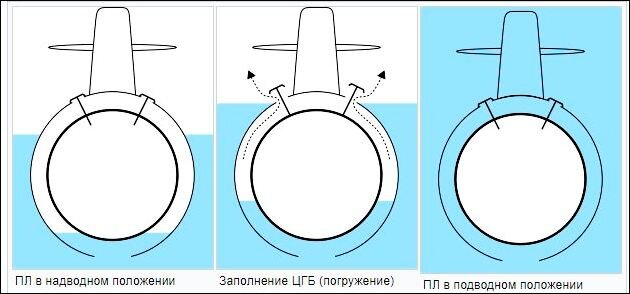
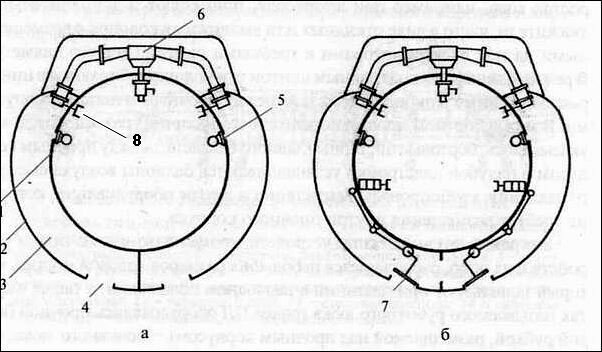
The ventilation valves open, the water displaces the air, the boat sinks. And here is a more detailed diagram of such a system (a) and additionally the Kingston system (b), where the inlets are kingstons closed by special valves:
1 – sturdy hull plating; 2 – light hull plating; 3 – main ballast tank; 4 – scupper; 5 – compressed air supply valve to the tank; 6 — tank ventilation valve; 7 – Kingston; 8 – Manual emergency flap drive.
Each of these systems has its pros and cons. If bad weather is raging at sea and the boat is tossed by ocean waves with large lists, then the air can be partially bleed through the scuppers and the water will gradually fill the ballast tanks. It is good if it is possible to blow them constantly. And if you don’t? It won’t take long to drown, and an increased consumption of compressed air is undesirable in principle, but more on this problem below.
So the presence of closing kingstons is not superfluous at all. On the other hand, it is a more complex device, and the cross-section of the passage holes is noticeably smaller, which slows down the inflow of water during diving, and therefore reduces the speed of immersion, and this can critically affect the survivability of the boat.)
56. The commander shall be personally responsible for opening and closing the conning tower hatch. After opening or closing, the commander notifies the boat: “The conning tower hatch is open or closed.”
Section VII. Urgent Immersion.
Command “Alarm!”. An audible signal is activated, and the machine telegraphs are switched to the “Dive” position.
116. Each member of the crew repeats the command aloud, so that it is guaranteed that even those who are asleep will be awakened by the order. Particular attention should be paid to the loud exclamation of the order, because the noise of the diesels, still prevalent in the boat, must be overcome, and the order must reach the engine room even in the event of a failure of the signal bell, flashing beacons, and machine telegraphs.
117. Urgent diving shall always be carried out by the watch and the ship’s schedules shall be drawn up in such a way that it can be carried out only by the watchmen.
118. Diesel engines shall be stopped immediately, diesel clutches shall be switched off, electric propeller motors shall be switched to “Full Ahead” (without further notice), all external and internal air intake valves, as well as external exhaust gas flaps and internal exhaust gas valves, shall be closed.
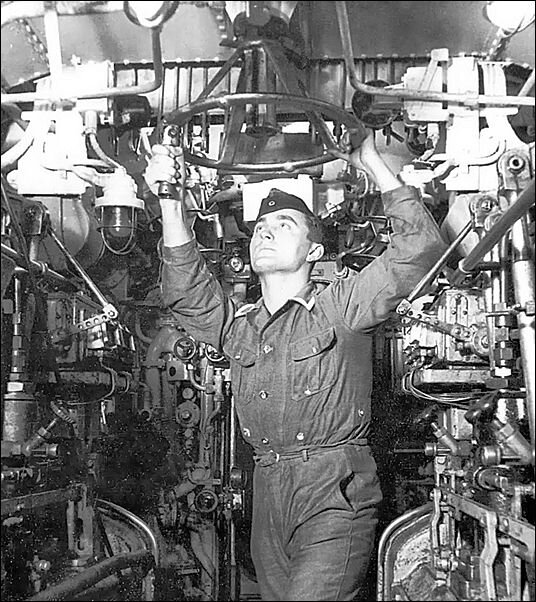
The bow horizontal rudders are set to the “Sharply down” position, the stern rudders are in the neutral position. (In some ways, I see differences from our practice.)
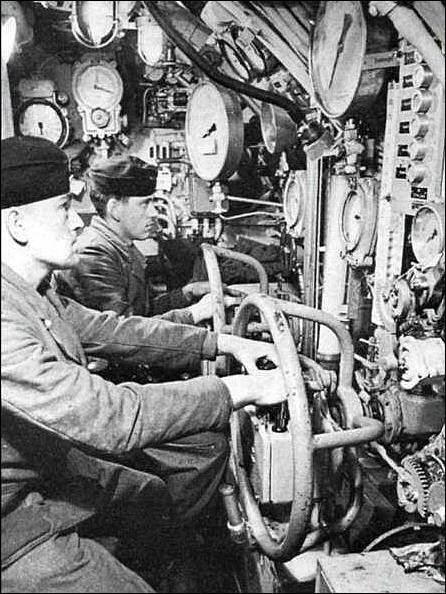
119. In addition to any existing display system, the mechanical engineer at the central station receives an oral report from the engine room: “Done!”
120. After that, the mechanical engineer to the commander: “Done.”
Officer of the watch to the mechanical engineer: “Off” when the conning tower hatch is closed.
Commander: Dive.
121. The engineer repeats the order. The tank ventilation valves shall be opened, and the valve of tank No. 1 shall be opened by a separate order. (This number is worn by the stern ballast tank, and in order for the boat to quickly assume a forward leaning position to speed up the dive, this tank may be filled with a delay.)
In order to avoid a too steep descent, if necessary, the engineer is reminded of it from the valve control station: “There is only one question”. The decision on it is made separately.
The engineer receives reports on the opening of the ventilation valves in the order of tank numbers.
122. After that, the mechanical engineer reports to the commander: “The ventilation valves are on.” (Have you forgotten that no other forms of report other than on and off are allowed?)
Commander: “Go to a depth of X meters.” (In combat conditions, usually up to 80 meters).
The engineer repeats the order and transmits it to all rooms.
124. In general, it is necessary to dive in such a way that the upper edge of the bridge bulwark and the stern sink at the same time. Accordingly, the following trim angles are set for each type of boat:
Type II and VII: 8° to 15°,
Type IX C, IX D, XB and XIV: 7° to 12°.
126. In most cases, in the event of an urgent dive in combat conditions, it is necessary to achieve not only a speedy escape from the surface, but also a speedy achievement of greater depth. To do this, the boat must be tilted sharply from 20 m and quickly deepened at angles from 15 to 30°.
(And why not do it right away? because the feed can stick out of the water).
Section VIII: Underwater Movement.
152. The instructions of the mechanical engineer on the depth of movement shall be repeated by the operator of the bow horizontal rudders, and on the angle of ascent or submersion – by the stern rudders. In contrast to the vertical rudder steering, orders about the angles of change of the position of the horizontal rudders themselves are not repeated, but are carried out immediately and their execution is also not reported. (In my opinion, this contradicts point 1, but this is how it is in the text of the document)
153. The specified depth is communicated to all rooms verbally from person to person. The bow and stern compartments compare this value with their depth gauges and report discrepancies of more than 10 meters.
154. Strict silence reigns in the boat, and any insignificant movement to and fro should be avoided. The change of watch takes place through the exchange of individual sailors. Any use of pumps, including hand pumps (cook), may be carried out only with the permission of the commander. The holds need to be monitored constantly. The inspection is carried out every hour with a report to the mechanical engineer.
156. Any operation or movement of torpedo armament causing a change in weight or trim must be approved by the engineer as this greatly affects depth control.
157. For longer dives, air samples must be taken hourly, starting at 4 o’clock.
Section XI: Behavior in Difficult Situations
A. Water intake.
241. If water begins to enter the boat and this results in such a large negative buoyancy that it sinks, the following must be taken into account before blowing down ballast tanks, fuel and ballast tanks, watertight bow or stern:
(a) How many metric tons of water got into the boat?
(b) Which ballast and other tanks are believed to be damaged?
(c) Will the boat be sufficiently buoyant if the tanks are partially or completely blown out?
The aim of these considerations should be to avoid haphazard and wasteful consumption of compressed air as much as possible.
242. It is therefore the responsibility of the commander and the mechanical engineer to make the most efficient use of the available source of compressed air. If blowing the ballast tanks is not enough, it is necessary to try to create buoyancy by throwing other cargo overboard. The order in which they try to lighten the boat and thereby bring it to the surface is as follows:
(a) Partially or completely purge ballast tanks and fuel and ballast tanks (if necessary, also pure fuel tanks, as well as watertight bow and stern tanks),
b) equalizer, trim tanks,
c) drain torpedo-substituting tanks,
d) drop anchor,
e) Fire torpedoes.
If a submarine has sunk and the crew is no longer able to lift the boat to the surface on their own, prepare for evacuation after deploying life-saving appliances (if fitted) and preparing rescue equipment.
In the event of accidents in one’s own waters, rescue should be postponed if the situation on the boat permits, as it can be expected that in most cases the location of the sinking is known and support vessels will arrive shortly. In this case, the signal to evacuate is given by the rescuer after the necessary preparatory measures have been taken.
If rescue from the outside is not possible with certainty, getting out of the boat should be done as soon as possible.”
But there are also peculiarities of swimming at great depths, under a periscope and separately surfacing separately.
